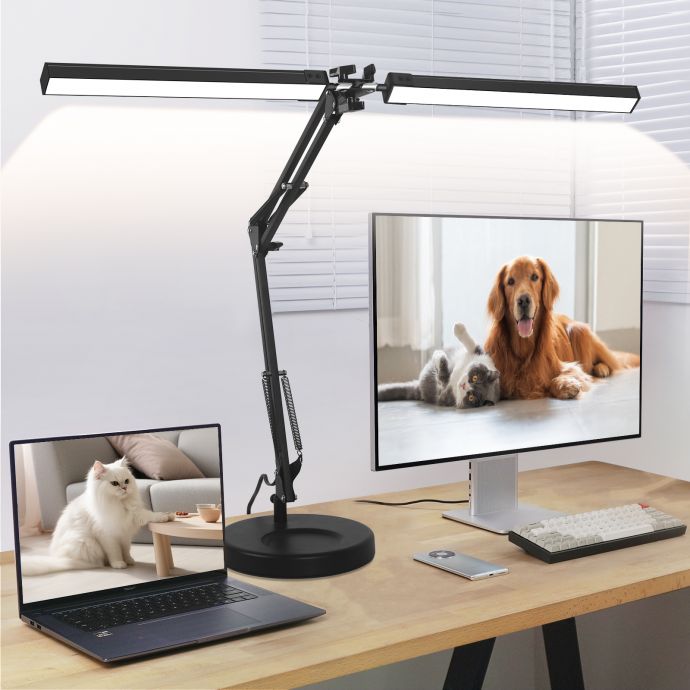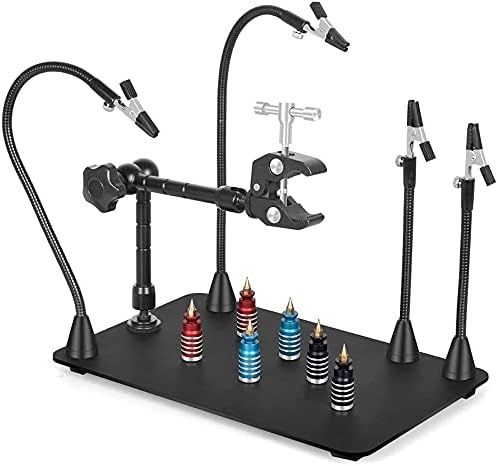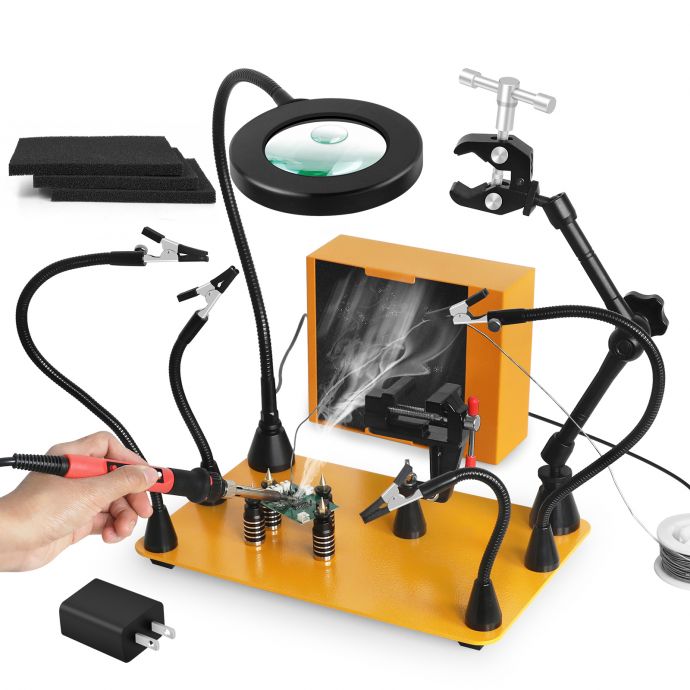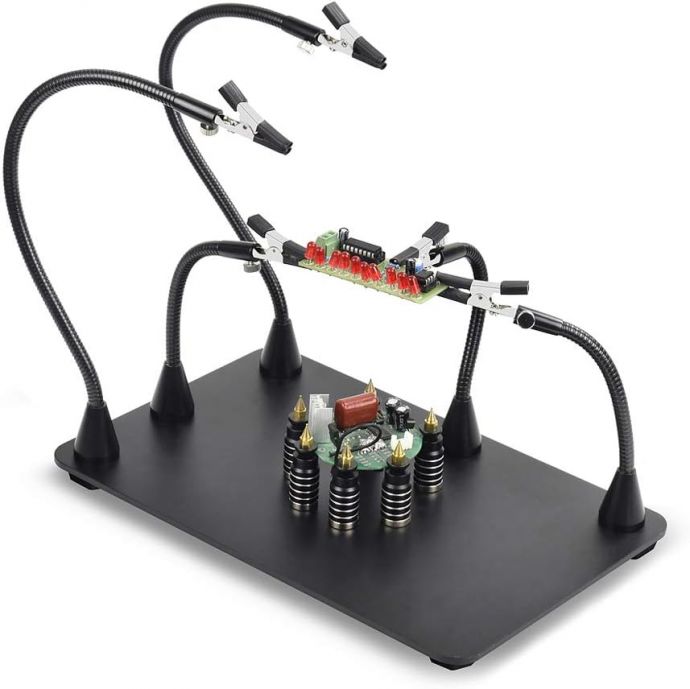In the world of electronics and model making, precision is key. Whether you're an experienced enthusiast or a curious beginner, mastering soldering involves not only having the right skills but also the right tools. One indispensable tool that stands out in its utility and versatility is the third hand tool. Today's sophisticated versions now come with unique features such as camera mounts and clamps, elevating your soldering experience to a whole new level.
**Understanding the Basics of a Third Hand Tool**

A third hand tool is an assistive device used to hold parts in place, offering stability and precision during intricate tasks like soldering. Traditionally, these tools comprise a base, flexible arms, and clips to maintain components in place. The evolution of these tools has transformed them into sophisticated gadgets equipped with additional features that address modern-day needs.
**Why Upgrade to a Modern Third Hand Tool?**
1. **Enhanced Stability and Flexibility**: Advances in materials and design have improved the stability and flexibility of these tools. Modern third hand tools feature weightier, non-slip bases for enhanced balance. The adjustable arms are not only more robust but also flexible, capable of bending and holding more stable positions without the risk of movement mid-task.

2. **Integrated Camera Mounts**: One of the defining features of the next-generation third hand tools is the inclusion of camera mounts. This addition caters to those who wish to record their process for tutorials, document their progress, or simply share their work with a wider audience. The mounts are typically adjustable, allowing for different angles and shots, effectively transforming your workbench into a multimedia studio.
3. **Versatile Clamps**: Unlike the rudimentary clip systems of older models, contemporary third hand tools come with versatile clamps that are more sophisticated. These clamps can grip a variety of component sizes and shapes securely, preventing slipping or damage to delicate parts. The adaptability of these clamps means they can be used for many different projects, from tiny printed circuit boards to larger model components.
**Key Features to Consider**

When selecting the best third hand tool for your setup, consider the following features:
- **Material Quality**: Opt for tools made from high-grade materials such as aluminum or stainless steel, which resist warping and have a long lifespan.
- **Number of Arms and Clips**: Depending on your project needs, choose a tool with sufficient arms and clips. Some tools offer interchangeable tips, which can switch between clips, magnifying glasses, and LED lights.

- **Base Design**: A heavy, stable base is critical to preventing tipping during use. Some models come with a magnetic base that offers added stability on metal work surfaces.
- **Camera Compatibility**: Ensure that the camera mount is compatible with your chosen recording device, whether it’s a smartphone, DSLR, or tablet.
**Benefits of Using a Third Hand Tool with Camera Mount**

1. **Improved Precision and Focus**: The hands-free nature of the third hand tool means you can focus more on precision. The camera mount allows you to zoom in and adjust focus on finer details, ensuring that your solder joints are perfect.
2. **Enhanced Learning and Documentation**: Recording your work can be an invaluable learning tool. Reviewing footage can help identify mistakes or areas for improvement. Additionally, documenting your processes can be beneficial for creating tutorials or sharing insights with the maker community.
3. **Safe and Efficient Workflow**: Juggling tools and components without aid increases the likelihood of accidents. A third hand tool stabilizes your workspace, freeing your hands to concentrate on the actual task, thus minimizing the risk of burns or short circuits.

**Maximizing Your Third Hand Tool's Potential**
- **Regular Maintenance**: To ensure longevity, clean the tool after each use, especially the clamps and tips, to prevent residue build-up. Lubricate joints periodically for smooth movement.
- **Experiment with Configurations**: With multiple arms and tips, try different configurations to find what works best for each project. Adjust angles and heights to maximize comfort and efficiency.

- **Integrate with Other Tools**: Combine your third hand tool with other soldering aids such as heat guns or fume extractors to create a comprehensive workstation. The more integrated your setup, the smoother your workflow will become.
**Conclusion**
The evolution of the third hand tool into a multifunctional device with camera mounts and versatile clamps marks a significant leap in DIY electronics and model making. By providing stability, precision, and documentation capabilities, these modern third hand tools are truly assets to any maker's toolkit. Whether you're soldering delicate circuitry or piecing together intricate models, investing in this all-in-one utility can substantially enhance your workmanship, allowing you to showcase your craftsmanship with pride and accuracy. As you integrate this tool into your daily practice, you'll find yourself soldering with greater confidence and finesse, truly mastering your soldering game.









